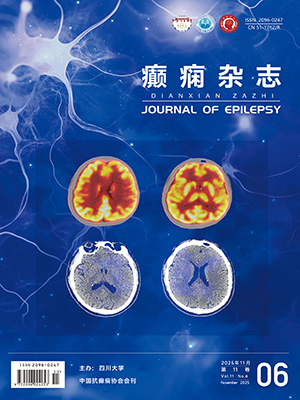| 1. |
张敏, 蒋莉. 癫痫持续状态的定义分类及药物治疗进展. 儿科药学杂志, 2018, 24(10): 54-58.
|
| 2. |
陆璐, 李劲梅, 周东. 癫痫持续状态进展. 癫痫杂志, 2019, 5(4): 241-243.
|
| 3. |
Trinka E, Cock H, Hesdorffer D, et al. A definition and classification of status epilepticus - report of the ILAE task force on classification of status epilepticus. Epilepsia, 2015, 56(10): 1515-1523.
|
| 4. |
夏毅, 张伟, 井晓蓉, 等. 儿童癫痫持续状态的临床特点、治疗及预后分析. 中华神经外科杂志, 2021, 37(1): 16-20.
|
| 5. |
中国抗癫痫协会. 临床诊疗指南: 癫痫病分册. 北京:人民卫生出版社, 2015: 67.
|
| 6. |
朱海霞, 李小晶, 王秀英. 儿童惊厥性癫痫持续状态的病因及其预后的影响因素. 广西医学, 2017, 39(8): 1160-1163.
|
| 7. |
李慧. 儿童睡眠中癫痫性电持续状态诊疗进展. 国际儿科学杂志, 2019, (03): 182-186.
|
| 8. |
Bektas G, Kipoglu O, Pembegul Yildiz E, et al. Epileptic spasm and other forms of epilepsy in presumed perinatal arterial ischemic stroke in Turkey after more than 10 years follow-up: A single centre study. Brain Dev, 2019, 41(8): 699-705.
|
| 9. |
张琼香. 儿童癫痫持续状态298例临床分析. 苏州:苏州大学, 2018: 19-24.
|
| 10. |
方润桃, 庄锦玲, 杨燕珍, 等. 儿童癫痫持续状态的临床特点及脑电图分析. 中国卫生标准管理, 2020, 11(7): 62-66.
|
| 11. |
Pujar SS, Martinos MM, Cortina-Borja M, et al. Long-term prognosis after childhood convulsive status epilepticus: a prospective cohort study. Lancet Child Adolesc Health, 2018, 2(2): 103-111.
|




